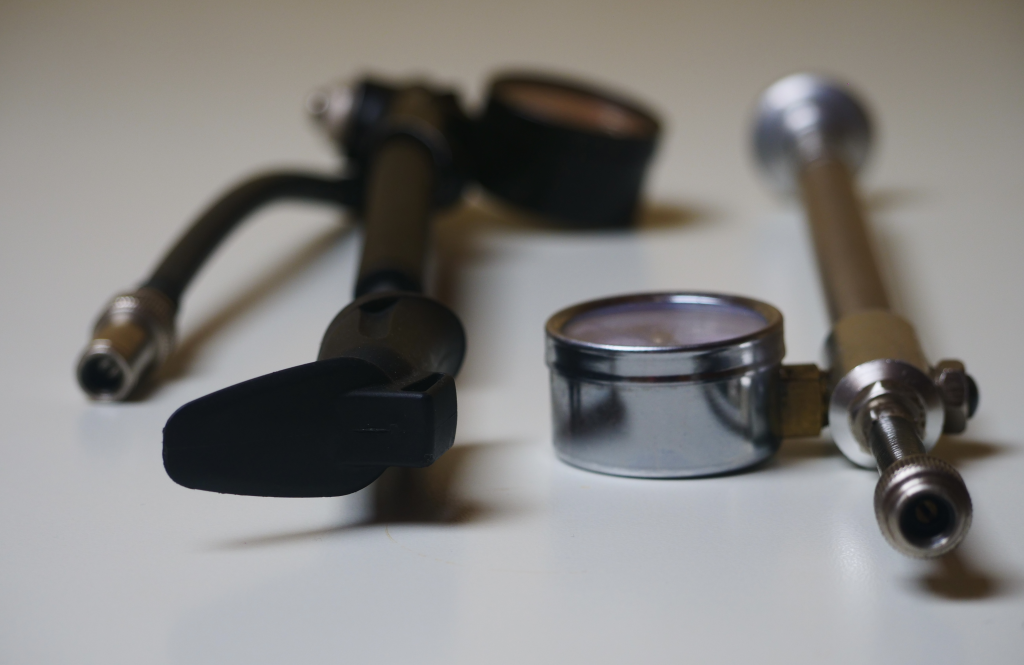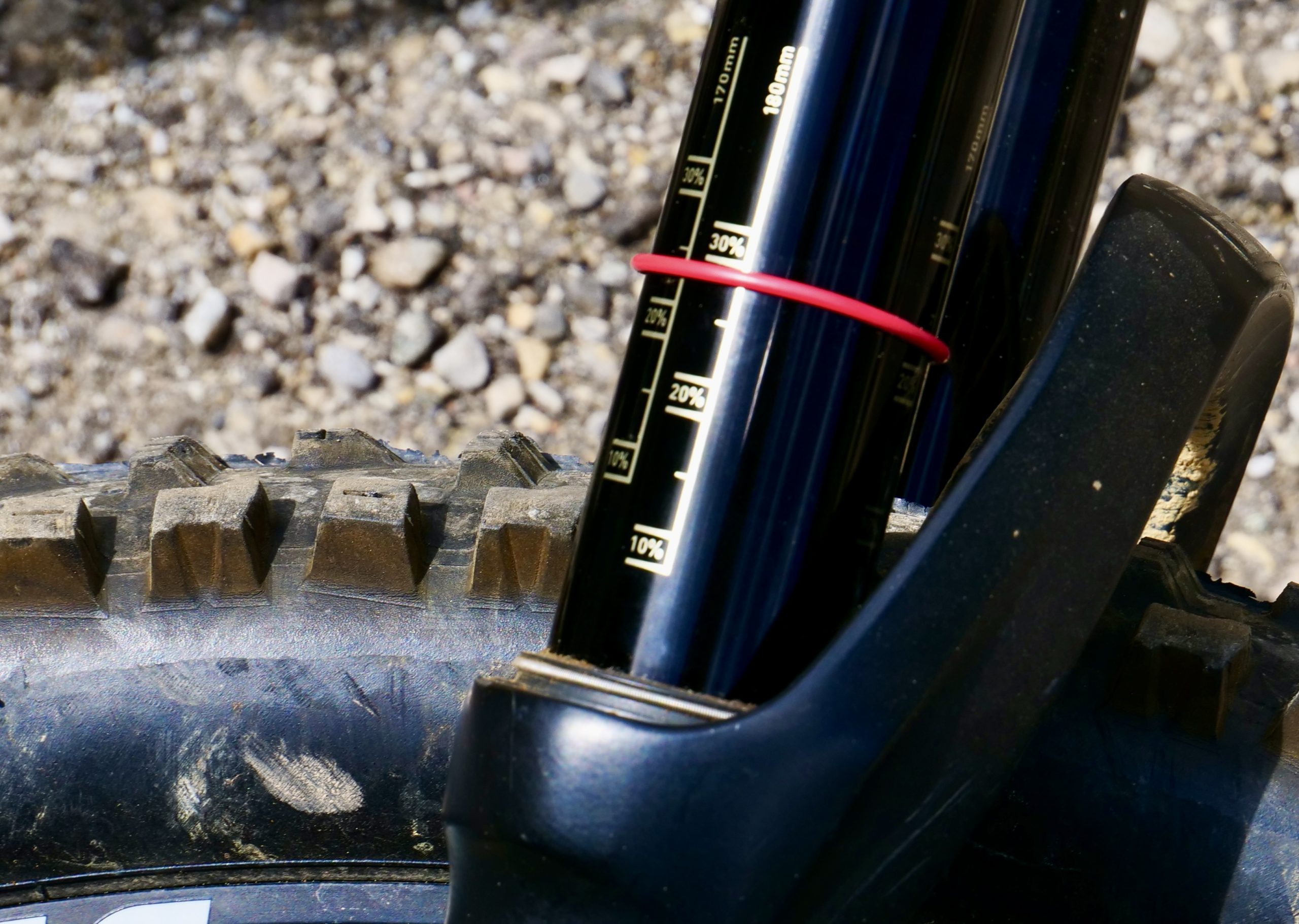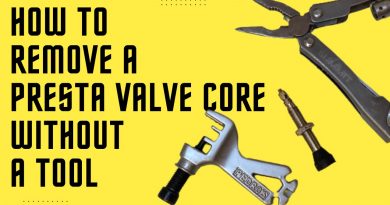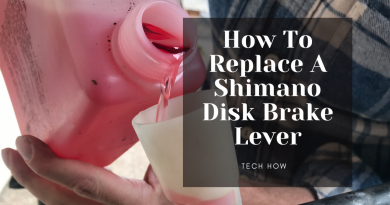What Are Shock Pumps? (How to Setup Suspension)
Most mountain bike suspension is air spring, which means it requires a shock pump to adjust how hard or soft your suspension is. It’s important to set the air pressure for your weight and riding style. This will make the bike perform better which will give you more confidence and ultimately more enjoyment.
In this article, we explain how mountain bike suspension works, and what are shock pumps? (and why you might need one)
- What Is a Shock Pump? (and Why You Might Need One)
- How to Use a Shock Pump
- How to Know If Suspension Is Air or Coil?
- What is the Difference Between a Shock Pump and a Regular Bike Pump?
- What Determines How to Set Suspension?
- Understanding Different Settings on Suspension:
- How Much Do Shock Pumps Cost?
- What Are the Different Types of Shock Pumps?
- What Should I Look For When Buying A Shock Pump?
- Final Thoughts (What Are Shock Pumps?)
What Is a Shock Pump? (and Why You Might Need One)
A shock pump is a pump specificity designed for suspension setup. The more air you add to the air spring the harder the suspension will be, and less air will make the spring softer. The amount of air you add to the suspension should depend on the rider’s weight. To add the correct amount of air, the suspension should ‘sag’, or compress a specific amount with the rider on the bike.

How to Use a Shock Pump
In this section, we will walk you through how to use a shock pump. To use a shock pump you simply screw the pump onto the shock value until it’s fully screwed on. Then once you have finished pumping you need to remove the shock pump quickly so you don’t loose the pressure in your shock. The challenge of using a shock pump is finding and setting the correct sag for you.
1. Find Your Sag
First, you need to determine how much sag you need to get your suspension up. The amount the suspension sags depends on the type of bike and riding discipline.
Here are the most common suspension sag settings
| Bike/Riding Type | Sag |
| XC Riding (80 – 120mm travel) | 20% – 25% sag |
| Trail Riding- (120 – 140mm travel) | 25% – 30% sag |
| Enduro riding-(140 – 180mm travel) | 27% – 32% sag |
| DH riding – 180mm + travel | 30% – 40% sag |
(The numbers above should be used as a guideline, it’s recommended to find the manufactures suggested settings for your bike and weight.)
2. Setting Your Sag


Most shocks and suspension forks have sag measurements marked on the shock or fork sanction. They often have a red rubber band to help indicate sag. so all you need to do is slide the red ring to the bottom of the frame or forks, and then balance on your bike (or have a friend hold the bike), and see how much the suspension sags. Then add or remove pressure depending on your target sag.

How to Set Suspension Sag if Not Marked on Shock or Forks?
Rear Shock
1) Measure from the centre of both shock bolts. This is the eye-to-eye measurement.
2) Deflate all the air out of your shock. Then measure the between both shock bolts again (the eye to eye).
3) Deducting these two numbers will give you the stroke length.
4) Divide target sag by 100 (for example 25% ➗ 100 + 0.25).
5) Multiply the stroke length by your target sag number. (for example 0.25 x 200mm stroke = 50mm) This is number is your ideal sag.
Ask a friend or use a rubber band/zip tie to measure this amount while standing on the pedals of your bike.

Forks
Setting sag for on the forks is a bit simpler than on the rear shock. All you need to do is divide the fork’s travel by 100. Then multiply the result by your target sag. For example 200mm fork ➗ 100 = 2. So 2 x 25 (25% sag) = 50. So 50mm should be your target sag.
How to Know If Suspension Is Air or Coil?
The simplest way to know if the suspension is air or coil is to look for an air value. Most air valves are located on top of the left fork leg under a screw-on cap. Rear shocks are simple because if you cant see a spring then it’s most likely to be an air shock. Also, note that if a bike is cheap (under $500)), then it’s more likely to have coil shock(s).
What is the Difference Between a Shock Pump and a Regular Bike Pump?
A shock pump differs from a regular bike pump by forming a seal with the valve stem immediately before the valve is opened. This helps to prevent air loss, which is more important with a shock pump.
This is because forks and shocks have a much smaller area to fill up with air than tyres, so the kind of air loss that you would expect when filling a tyre will be a lot more noticeable when filling up the suspension.
Shock pumps will also usually have a bleed valve to help adjust the pressure in much smaller amounts which is important when trying to make minute adjustments to pressure.
Regular bike pumps will also struggle to reach the pressures required for suspension.
What Determines How to Set Suspension?
The most important factor when setting up suspension is the rider’s weight, this ensures the suspension is not too hard or soft. Next, it’s important to set the damping/rebound, and then lastly you can finely tune your suspension with high and low-speed compression damping (if your suspension has the option).
Setting up suspension is becoming less of an art and more of a science due to products like ShockWiz that measure the air pressure as you ride and give the rider feedback via their phone. There are also other telemetry products which take a much deeper look at suspension setup, which is ideal for racers looking to get the very best out of their suspension, one of the best examples is BYB Telemetry.
Understanding Different Settings on Suspension:
As well as the pressure in the suspension, there are a number of other settings that can be adjusted to get the ideal setting for riding.
Spring/Sag: Sag refers to how much the suspension is pushed down just with the weight of the rider on it. Sag is expressed as an overall percentage of the bike’s travel, and the manufacturer will generally have a set amount of recommended sag for the suspension on their bike.
Getting the sag correct will allow the bike to track the ground smoothly, while not going through all the travel when you hit big compressions. As riders become more experienced it’s common for riders to run less sag, allowing the rider to be more aggressive without the bike bottoming out and forcing the bike to stay on top of the bumps which can help them hold more speed. However, the stiff suspension is not for everybody, Loic Bruni one of the best DH riders in the world seems to run much softer suspension and it works well for him.
Rebound/damping: This is designed to ensure that the suspension only bounces once as it returns to its regular sag. A good way to test this is by riding off a curb as you try to adjust it correctly.
Low-speed compression damping: This ensures that the suspension is held higher up in order to keep some compression in reserve. In the rear shock, this is known as platform damping.
High-speed compression damping: This helps with the compression when the suspension has to act quickly on obstacles.
These are the settings that must be adjusted and then the shock pump can be used for keeping the correct pressure that you have set in your suspension.
How Much Do Shock Pumps Cost?
Shock pumps cost more than the cheapest tyre pumps, but they are not too expensive.
Red cycling offers a number of cheaper options that cost less than $25 (£20).
Rockshox sells shock pumps for around £30 but also has some higher-end models for about £50. Topeak sells some slightly more expensive models.
What Are the Different Types of Shock Pumps?

There are two main types of shock pumps: Mechanical and Digital
A mechanical shock pump will work just fine, and it’s what most people use because they are cheaper. However, if you’re looking for a more accurate reading then a digital shock pump will most likely be the best option.
What Should I Look For When Buying A Shock Pump?
Shock pumps differ from regular tyre pumps, so there are different things to look for when buying one. It is a good idea to be aware of just what to look for.
The Gauge. Make sure that you get a pump with a good-sized gauge so that you will be able to read it easily. Another thing to consider with the gauge is that different pumps can have some variation in their measurements. It is only a small difference – perhaps 3% to 5% – but it is still significant. For this reason, it is a good idea to always use your own pump which you are used to in order to get the desired results.
A good handle. As you will be pumping at high pressure, having a good handle with a good, comfortable, grip is very important. It is worth trying a few out, if possible, and seeing which fits best in your hand, as well as which has the least amount of slip when using it.
The body. This goes hand in hand with the handle and grip, as they are both parts of the body. The rest of the body will usually be made of aluminium.
The hose. If the pump that you buy does not have a good hose, it is not the end of the world. It is usually fairly easy to change the hose over for a better one. The ideal hose should be long enough that you can use it from a comfortable position as well as be both strong and flexible. It is also possible to get better valves for the hose.
Valve head. A valve head that stops air from escaping when the valve is removed is essential for making sure that the pressure remains the same.
Bleed valve. This is something that you won’t find on a regular tyre pump. It is to allow you to remove a minute amount of air if you put too much into your suspension.
Final Thoughts (What Are Shock Pumps?)
For anyone who will be riding mountain bikes regularly, a shock pump is a vital piece of kit. When you get a new bike it’s worth taking a shock pump in your bag, and testing out different pressures, to see which you prefer. At the end of the day we all have different riding abilities, and riding styles and a shock pump allows you to tune your suspension to what you prefer.
You might also like:




